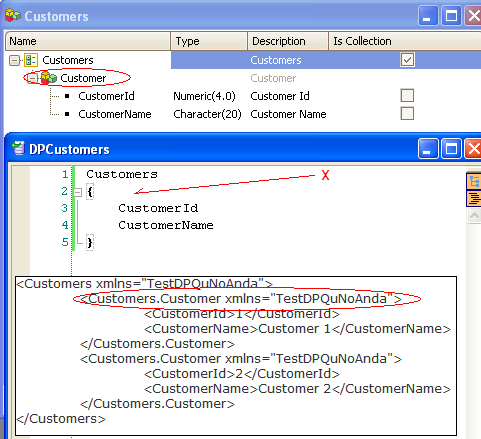It is one of the three main components of the Data Provider output-based declarative language.
An Element is an atomic value in the Output. 'Code' and 'Name' are Elements in the following example:
Customers // this is a Group
{
Customer // this is a Group
{
Code = CustomerId // this is an Element assignment
Name = CustomerName // this is an Element assignment
}
}
Each Element must be assigned by means of a Data Provider Element statement. Its syntax is that of Inline Formulas.
SampleOfElements
{
Constant = 'ABC'
Complex = 1 if CustomerBalance > 1000; 0 otherwise;
}
Note: IIf clause can be used too, as well as aggregation formulas.
If an Element is assigned with some attributes, GeneXus will infer how to obtain them from the Database in the same way it does in the For each command.
Elements and Attributes usually have the same name, as follows:
Customers
{
Customer
{
CustomerId = CustomerId
CustomerName = CustomerName
}
}
But beware: the elements on the left are not attributes (but "elements"), unlike those on the right. In order to allow more compact writing, this code is the same as the following:
Customers
{
Customer
{
CustomerId
CustomerName
}
}
And you can still make it more compact. If you omit the Item name, GeneXus will infer it.

The Item name is necessary if any element of the collection will have different inputs.
Samples
{
//Fixed Data
SampleItem
{
SampleId = 0
SampleDsc = 'Fix sample'
}
// Data retrieved from the data base
SampleItem
{
SampleId = SampleIdInTable
SampleDsc = SampleIdInTable
}
}